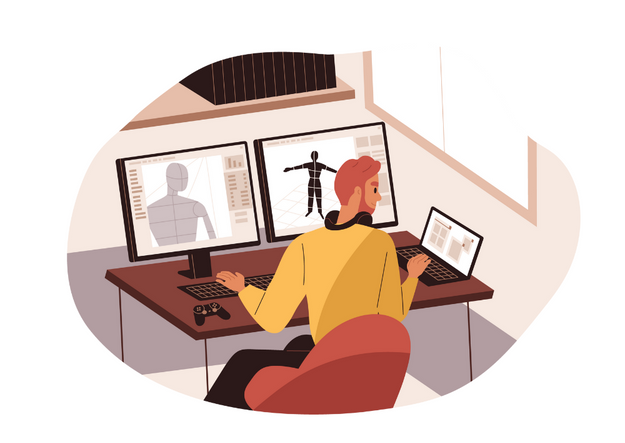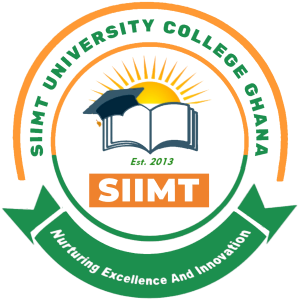HomeDiploma CoursesAnimation Course

Teaching Method
Animation Course - 1 Year
-
Animation Course involves the creation of moving visuals and characters to communicate ideas, stories, or messages in engaging ways.
-
It encompasses a range of artistic techniques, digital tools, and storytelling principles designed to bring imagination to life and ensure creativity, clarity, and impact across various media platforms.
Syllabus
Module 1: Fundamentals of Animation
Definition and scope of animation
Historical evolution of animation
Types and forms of animation (2D, 3D, stop motion, etc.)
Basic principles and applications of animation
Module 2: Storytelling and Narrative Structure
Fundamentals of storytelling in animation
Story structure (three-act structure, conflict, resolution)
Character development and arcs
Scriptwriting techniques for animation
Introduction to storyboarding
Module 3: Image Sizes and Camera Fundamentals
Image formats, sizes, and resolutions
Camera movements and shot composition
Lighting principles for animation
Visual storytelling through camera techniques
Module 4: Drawing and Design for Animation
Fundamentals of drawing and design
Character design and development
Environment design and layout creation
Color theory and palette selection for mood and tone
Module 5: Animation Software Applications
Introduction to 2D animation software (Adobe Animate, Toon Boom)
Introduction to 3D animation software (Maya, Blender)
Understanding software interfaces and tools
Hands-on exercises with basic animation workflows
Module 6: Principles of Animation
The 12 fundamental principles of animation
Application of squash and stretch techniques
Anticipation, staging, and exaggeration
Timing, spacing, and motion dynamics
Module 7: 3D Animation Techniques
Introduction to 3D modeling and texturing
3D animation principles and workflows
Lighting and rendering in 3D environments
Practical 3D animation exercises
Module 8: Visual Effects and Compositing
Introduction to Adobe After Effects and other compositing tools
Basic visual effects techniques for animation projects
Layering, keying, and compositing workflows
Practical exercises in VFX integration
Module 9: Final Project (Capstone – 3 Months)
Project ideation, proposal, and pitch presentation
Supervised project development (concept to completion)
Integration of learned techniques across modules
Final project presentation, review, and feedback
Admission Requirements
- Basic understanding of Computers and IT
- WASSCE or Certification in IT
- Laptop (minimum: i5 processor, 8 GB RAM)
Campus & Class Schedules
Campus Locations
Nima Kanda Overpass, Accra
18 Junction, Opp. KFC, Spintex Rd
Class Schedules
⏱ All batches have a total of 4 Credit Hours per week.
Weekday Batch (Two days a week)
Option 1: Morning — 10:00 AM to 12:00 PM
— OR —
Option 2: Evening — 6:00 PM to 8:00 PM
Weekend Batch (Only Saturday)
Morning — 10:00 AM to 2:30 PM
Note: Students may enroll in either a Weekday Batch or a Weekend Batch (not both).
Duration and Fees
- Ghanaian: GHC 8,000
- Non-Ghanaian: GHC 9,500
- Duration: 10 months (intensive)
Admission Process
Step 3 – Confirmation: Receive official admission confirmation from SIIMT University College.
Hostel and Accomodation
Hostel facilities are available
Hostel Fees – click here
Our hostels are clean and hygenic
Career Opportunities
The following roles and salary ranges are based on the US job market.
Storyboard Artist
Visualizes scripts and creates sequences of drawings that map out how a story will unfold in an animation or film.
Salary: $50,000 – $85,000 per year
2D Animator
Designs characters, environments, and movements using traditional drawing techniques or digital software to create engaging animations.
Salary: $45,000 – $80,000 per year
3D Animator
Builds digital models and brings them to life with realistic movements, often used in films, video games, and commercials.
Salary: $55,000 – $95,000 per year
Character Designer
Develops the look, personality, and style of animated characters, ensuring they align with the story and audience.
Salary: $50,000 – $85,000 per year
Visual Effects (VFX) Artist
Creates special effects, simulations, and realistic enhancements that blend seamlessly with live-action or animated content.
Salary: $60,000 – $105,000 per year
Motion Graphics Designer
Creates animated graphics and visual effects for advertisements, explainer videos, websites, and presentations.
Salary: $50,000 – $90,000 per year
Lighting & Rendering Artist
Adds lighting, shading, and rendering to animation projects, making scenes visually appealing and realistic.
Salary: $55,000 – $95,000 per year
Texture Artist
Designs and applies textures, patterns, and surface details to 3D models, enhancing realism in animated environments and characters.
Salary: $50,000 – $85,000 per year
Animation Educator/Trainer
Teaches students and professionals about animation tools, principles, and industry practices.
Salary: $45,000 – $80,000 per year
Art Director (Animation)
Oversees the visual style and artistic direction of animation projects, managing teams of artists and ensuring consistency in design.
Salary: $80,000 – $130,000 per year
FAQ related to Animation Course
1. How to apply for the Animation Course at SIIMT? ▼
2. What is an Animation Course? ▼
3. What skills do I learn in an Animation Course? ▼
4. Can I get a job after completing an Animation Course? ▼
5. Is an Animation Course good for beginners? ▼
Embark on a transformative journey at SIIMT University College, mastering Animation through unparalleled hands-on experience.
WHY CHOOSE US?
Practical Training
Bridging knowledge with experience, shaping skills, and preparing for real-world success
Industry Experts
Students learn from industry experts, shaping skills for real-world success and job market.
Updated Syllabus
Our syllabus enriches learning, fostering skills, and prepares students for a brighter future


